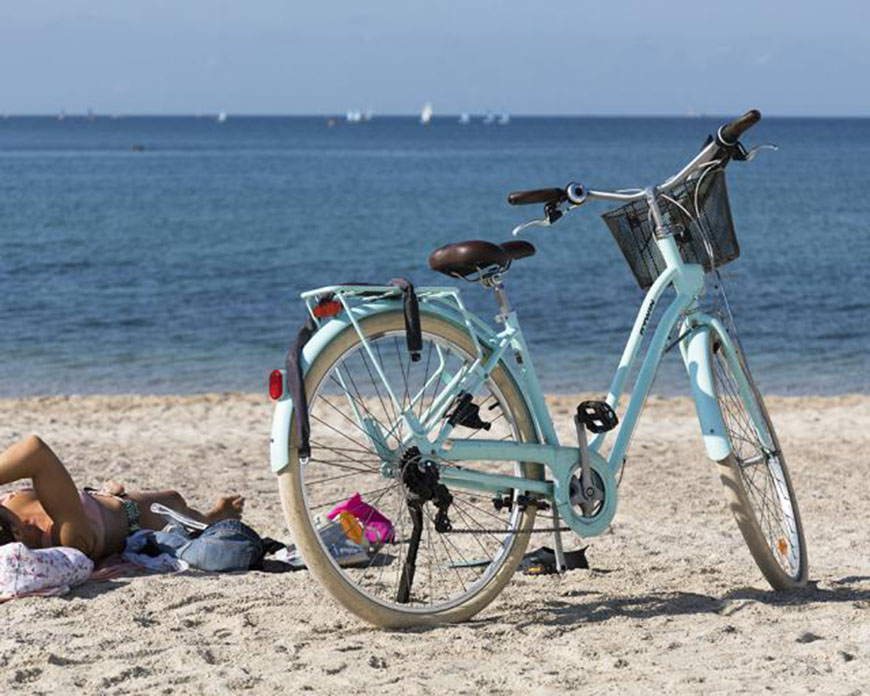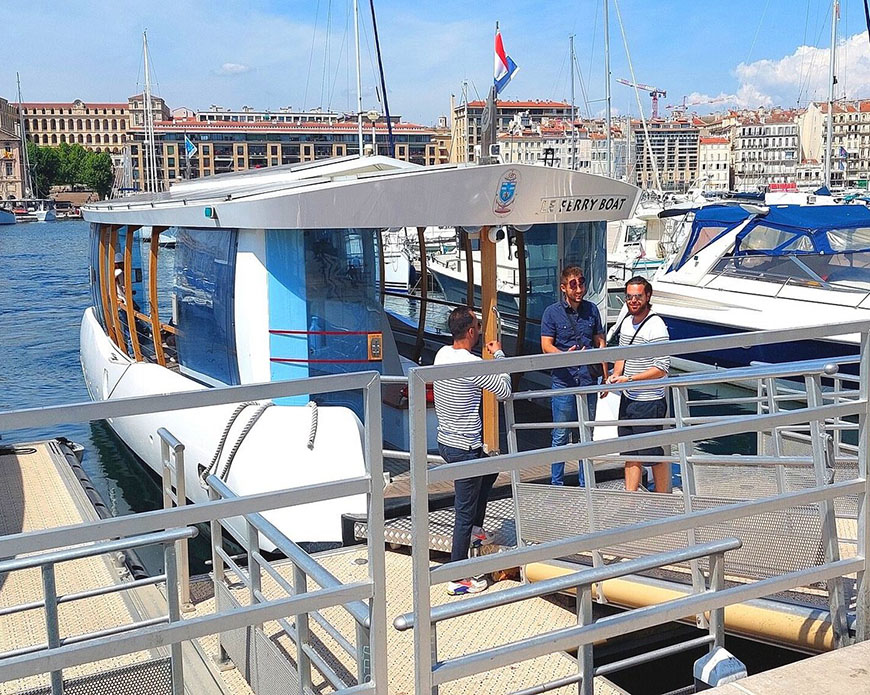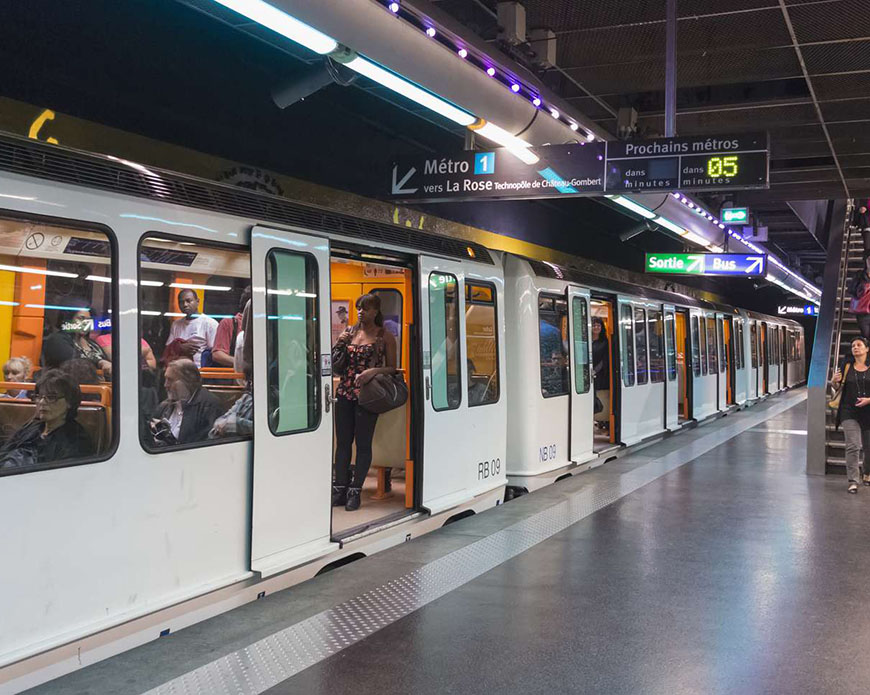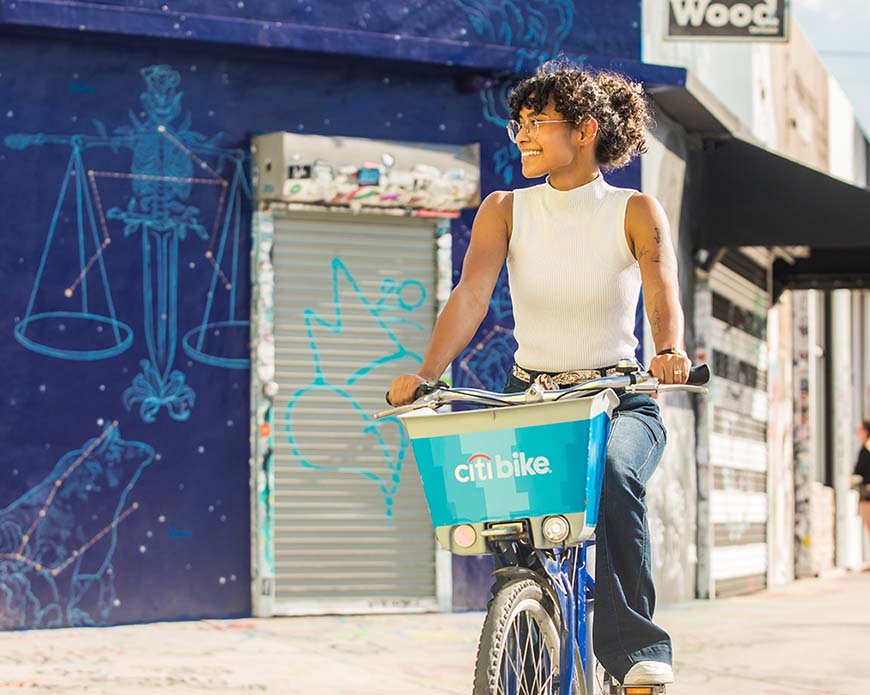Marseille, the second-largest city in France, is a bustling Mediterranean port with a rich history, diverse culture, and stunning coastal views. Whether you’re exploring the ancient streets of the Vieux-Port (Old Port), relaxing on the beaches of the Prado, or hiking in the nearby Calanques National Park, getting around Marseille is an essential part of the experience.
1. Public Transportation in Marseille
Marseille boasts an extensive and efficient public transportation system managed by the Régie des Transports Métropolitains (RTM). The network includes buses, trams, and two metro lines, making it easy to travel between the city’s key areas.
Metro
The Marseille Metro is the backbone of the city’s public transit system. It consists of two lines:
- Line 1 (Blue Line): Running from La Rose to La Fourragère, this line passes through key locations like Gare Saint-Charles (the main train station) and Vieux-Port. It’s the best way to travel quickly between the northern and eastern parts of the city and the central areas.
- Line 2 (Red Line): Connecting Bougainville in the north to Sainte-Marguerite Dromel in the south, this line is ideal for reaching the southern districts, including the Stade Vélodrome, Marseille’s famous football stadium.
Trains run frequently, with intervals of about 3 to 5 minutes during peak hours and 7 to 10 minutes during off-peak times. The metro operates from 5:00 AM until 12:30 AM daily.
Trams
Marseille’s tram network complements the metro, providing additional coverage to key areas. The tram system consists of three lines:
- Line T1: Running from Noailles to Les Caillols, it covers the eastern districts and passes through La Plaine, a popular area known for its market and nightlife.
- Line T2: Extending from Arenc Le Silo to La Blancarde, this line passes by the Docks area, a major shopping and business district.
- Line T3: Connecting Arenc Le Silo to Castellane, T3 provides easy access to the southern neighborhoods and intersects with Metro Line 2.
Trams are a scenic and leisurely way to explore Marseille, especially if you’re traveling short distances within the city center.
Buses
RTM operates over 100 bus routes, covering every corner of Marseille. Buses are particularly useful for reaching areas not served by the metro or tram, such as the coastal districts or the outskirts of the city.
Bus frequency varies by route and time of day, with major routes running every 10-15 minutes during peak times. The buses operate from early morning until late at night, with some routes offering night service.
Ticketing and Fares
A single ticket allows you to use all forms of public transport (metro, tram, bus) for up to one hour after validation. Tickets can be purchased at metro stations, tram stops, and on buses. You can also buy a rechargeable “Transpass” card if you plan to stay longer, which allows you to load multiple tickets or opt for daily, weekly, or monthly passes.
Fares:
- Single ticket: €1.70
- 10-ticket pack: €14.00
- 24-hour pass: €5.20
- 72-hour pass: €10.80
- Weekly pass: €14.90
These passes are convenient for tourists, offering unlimited travel on the RTM network for the duration of the pass.
2. Walking Around Marseille
One of the best ways to experience Marseille is on foot. The city’s compact center is pedestrian-friendly, with many key attractions within walking distance of each other. Walking allows you to explore Marseille’s narrow, winding streets, discover hidden squares, and appreciate the city’s historic architecture.
Neighborhoods to Explore on Foot
- Vieux-Port (Old Port): The heart of Marseille, the Old Port is a great starting point for a walking tour. Stroll along the quays, enjoy the bustling fish market, and take in views of the boats and the Mediterranean Sea. From here, you can easily walk to nearby attractions like Le Panier and the MuCEM.
- Le Panier: Just north of the Old Port, Le Panier is Marseille’s oldest neighborhood. Its narrow, steep streets are lined with colorful houses, artisan shops, and cozy cafes. Walking through Le Panier is like stepping back in time, with historic sites like the Vieille Charité and the Cathédrale de la Major.
- La Canebière: Marseille’s main thoroughfare, La Canebière, stretches from the Old Port to the Church of Réformés. It’s a lively street full of shops, restaurants, and cultural sites. Walking along La Canebière is a great way to soak up the city’s vibrant atmosphere.
- Cours Julien: Known for its bohemian vibe, Cours Julien is a pedestrian-friendly area filled with street art, trendy boutiques, and lively cafes. It’s a popular spot for locals and a great place to explore on foot.
3. Cycling in Marseille
Cycling is becoming an increasingly popular way to get around Marseille, thanks to the city’s expanding network of bike lanes and the public bike-sharing system, Le Vélo. Riding a bike offers a fun and eco-friendly way to explore the city, especially along the scenic coastal routes.

Le Vélo
Le Vélo is Marseille’s public bike-sharing service, with over 130 stations spread across the city. It’s easy to rent a bike for short trips, and the first 30 minutes are free, making it a convenient option for tourists.
To rent a bike, you’ll need to register online or at a Le Vélo station. You can choose between a short-term subscription (1 day or 7 days) or a long-term subscription (monthly or yearly). After registration, you’ll receive a code that allows you to unlock a bike at any station.
Popular Cycling Routes
- Corniche Kennedy: This scenic route along the Mediterranean coast offers stunning views of the sea and the city. The Corniche is perfect for a leisurely ride, with plenty of spots to stop and enjoy the scenery.
- Prado Seaside Park: Located in the southern part of Marseille, Prado Seaside Park is a great destination for a relaxed bike ride. The park is flat and spacious, making it ideal for cyclists of all levels.
- Calanques National Park: For the more adventurous, cycling to the Calanques National Park offers a challenging ride with breathtaking views of the rugged coastline and turquoise waters. Be prepared for some steep climbs, but the rewards are well worth it.
4. Car Rentals in Marseille
Renting a car in Marseille provides the freedom to explore the surrounding region at your own pace. Whether you’re planning a day trip to the Provençal countryside or a drive along the Mediterranean coast, having a car can make your travels more flexible.

Where to Rent a Car
Car rental agencies are conveniently located at Marseille Provence Airport (MRS) and Gare Saint-Charles, the main train station. Major international companies like Hertz, Avis, and Europcar operate in Marseille, as well as local rental agencies. It’s advisable to book your car in advance, especially during the peak tourist season.
Driving in Marseille
Driving in Marseille can be challenging, particularly in the city center where traffic is heavy, and parking is scarce. The narrow streets of older neighborhoods like Le Panier are not ideal for cars, so it’s best to park in designated lots and explore these areas on foot.
Parking garages are available throughout the city, and many hotels offer parking for guests. Be sure to check the parking options when booking your accommodation.
Day Trips from Marseille
- Aix-en-Provence: Just a 30-minute drive from Marseille, Aix-en-Provence is a charming town known for its beautiful fountains, historic architecture, and vibrant markets. It’s a perfect destination for a day trip.
- Cassis: Located about 40 minutes from Marseille, Cassis is a picturesque fishing village with stunning beaches and access to the Calanques. Drive along the Route des Crêtes for breathtaking views of the coastline.
- Arles: A 1.5-hour drive from Marseille, Arles is famous for its Roman monuments and its association with the artist Vincent van Gogh. It’s a must-visit for history and art lovers.
5. Taxis and Ride-Sharing
Taxis are readily available in Marseille, and they can be hailed on the street or booked in advance. The city’s taxis are metered, with rates regulated by the local government. Keep in mind that taxi fares can be higher at night, on Sundays, and during holidays.
Ride-Sharing
Uber operates in Marseille, offering a convenient alternative to traditional taxis. Uber rates are often lower than taxi fares, and the app allows you to track your driver and pay electronically, making it a hassle-free option for getting around the city.
6. Ferries and Boat Tours
Given Marseille’s coastal location, traveling by boat is an exciting way to see the city from a different perspective. The city’s ferry services connect the Old Port with nearby islands and coastal neighborhoods.

Frioul If Express
This ferry service operates from the Old Port to the Frioul Islands and Château d’If, the famous fortress-prison featured in “The Count of Monte Cristo.” The islands are a great spot for a day trip, offering beautiful beaches, hiking trails, and historical sites.
Boat Tours
Numerous boat tours depart from the Old Port, offering trips along the coast to the Calanques, Cassis, and beyond. These tours provide a unique view of Marseille’s stunning coastline and are a popular activity for visitors.
7. Planning Your Transportation Budget
When planning your trip to Marseille, it’s essential to budget for transportation costs. Depending on your travel style and itinerary, you might need to allocate funds for public transit, bike rentals, taxis, or car rentals.
- Public Transport: If you plan to use public transit frequently, consider purchasing a daily or weekly pass to save money.
- Car Rental: Factor in the cost of gas, parking, and potential tolls if you’re driving outside the city.
- Biking: Le Vélo is an affordable option, especially if you only use the bikes for short trips.
- Taxis/Uber: While convenient, taxis and Uber can add up, so use them sparingly if you’re on a budget.
By understanding the transportation options available in Marseille, you can make informed decisions that enhance your travel experience. Whether you’re navigating the city’s public transit system, cycling along the coast, or driving through Provence, getting around Marseille is an adventure in itself.



